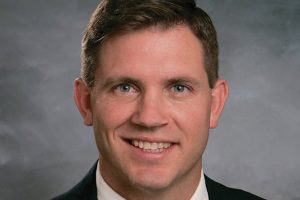By UAFP
First, a little bit about Serena
I moved to Cottonwood Heights, Utah, from Houston, Texas, just before third grade. I was (and am) a spirited but shy kid who ruminated a lot on Halloween costumes. My parents immigrated to the U.S. from China for graduate school before I was born, and I have one younger brother, Everest, who currently works as a consultant in Washington, D.C. I attended Skyline High School and did my undergrad at WashU in St. Louis. My primary interests outside medicine are fine arts and humanities, food (specifically charcuterie and picnic dining), and, like all good Utahns, the outdoors.
When did you become interested in science and medicine?
For a lot of my pre-college years, I was actually fairly resistant to the idea of a career in science and medicine! My parents are longtime proponents of the future Dr. Serena Fang, so I’ve always had it on my radar as an option. But most of my hobbies growing up revolved around art, and my favorite high school course was art history. Even though I enjoyed science courses, and even though I had an awesome seventh-grade science teacher — one who made me truly believe that science was cool (s/o Ms. Stucki @Wasatch Jr. High) — I didn’t see myself as the science type for a long time. I also have always had just the tiniest bit of a rebellious streak, so I couldn’t help but push back on my parents. I was an undergrad, fully enrolled in pre-med courses, before I finally admitted to myself that medicine could be a good fit for me.
Tell us about your journey to medical school.
My medical school journey was mostly about resolving cognitive dissonance; thinking back on my struggle now, I realize the core issue was that I didn’t think I could be both artsy and science-y (I was wrong). I got my B.A. at Washington University in St. Louis, where I majored in Psychology, Neuroscience and Philosophy (one major) and minored in Text and Traditions. Both were multidisciplinary areas of study specially curated by WashU faculty. My major, PNP, wove together the complexities of biochemistry, social science, and humanities in a way that showed me how much arts and humanities could and would always be part of science and medicine. As time went on and I got more and more exposure to medicine through shadowing, volunteering and research, I grew to see myself in it.
What was it that drew you to apply at the University of Utah Medical School? How has your experience been with the program overall?
Utah, and more specifically, the University of Utah, is home base for me. My parents both worked at the U throughout my grade school years. As a result, I spent a lot of my after-school and extracurricular time here for piano lessons, summer camps and volunteering. It just made sense for me, emotionally and financially, to come back for medical school. Overall, I’ve really enjoyed my time at the U! It’s a program with high expectations for medical students in the clinical environment, but I’m incredibly grateful to have confidence in my training going forward. Another wonderful thing about the U med school is that it attracts a student body with a wide variety of experiences outside medicine. Many of my peers have had successful careers outside of health care before applying to medical school, and I’ve appreciated the perspective they bring.
When did you decide to pursue family medicine as your specialty? What are the aspects of this specialty that interested you the most?
I started seriously considering family medicine after my OB rotation; at that point, I already knew I loved internal medicine and pediatrics, so it was only a matter of time before I turned to family med. Beyond enjoying the scope of practice, I found that I was deeply drawn to the strength of patient-provider relationships, as well as the potential for community outreach. As a provider for not only a patient but also their parents, children and neighbors, family physicians can integrate into their patients’ lives in a way that is, I believe, unique to family medicine. This integration allows for a more holistic understanding of the patient, their life and their needs. I also think there’s something to be said for slowly piecing together a patient’s narrative over time — although the day-to-day interactions of primary care may seem unassuming, their cumulation has incredible depth. It’s the strength of these relationships that gives family physicians the power to impact their patients’ lives. As experts in preventive health, I also have found family medicine physicians to be perfectly poised to serve their community in the form of public health fairs and mobile care. This kind of service is an area that I’ve been increasingly enthusiastic about and hope to pursue in the future!
I have heard from some other students that sometimes doctors from other specialties will look down on family medicine — has that been your experience? What do you think the general public needs to understand about the importance of more doctors going into family medicine? What is it that makes you most proud of going into this specialty?
The experience that I’ve encountered a few times is a nonfamily medicine attending who sincerely commends me for going into family medicine but implies that 1. It is a difficult and unrewarding field, and 2. They would never do it. My response is to remind both myself and others that all specialties of medicine have unique challenges and that each of us has different criteria for what we find rewarding. I’m not sure if I identify with a sense of pride with respect to going into family medicine — I just love it, and I know it’s the right place for me! Dissolving negative attitudes about family medicine is critical because we desperately need more preventive care providers. While I’m no health care expert, I believe that using family medicine physicians to optimize preventive health can generate higher quality, lower-cost health care.

What are the best aspects of medical school? The most challenging?
Medical school is a transformative experience like none other. You truly see and feel yourself growing from a student into a provider, and it’s incredible to bear witness to that change not only in yourself but in your peers. As a medical student, you can also explore all the different fields of medicine, which inherently exposes you to a massive range of human life and experiences. It has been one of the most profound privileges of my life to understand existence from this perspective. The hardest thing about medical school is the “grind” — it’s a lot of work for a long time, and you have to be persistent. It does get tiring, and sometimes it feels unfair to work so hard as an expectation, without praise. However, it does prompt you to find a cohort of peers to endure with and to support one another.
How has medical school changed due to safety restrictions from COVID-19? How has your practical experience changed because of COVID-19?
At the start of the COVID pandemic, my entire class was pulled from the clinical environment. For a couple of weeks, the school of medicine tried some online learning. The school ultimately decided to pause the curriculum until we could safely resume in-person work (about nine weeks later). After that, we returned to our clinical sites with new PPE requirements and restrictions on seeing COVID patients. While the disruption in rotations has resulted in significant schedule reorganization with overall decreased total clinical time, my day-to-day experience in the hospital after I returned has actually been quite stable.
Where do you hope to complete your residency? Where and what kind of practice do you hope to go into? Why?
This question is a tough one for me! I sometimes dream about working inpatient and ED services in a rural town, but I can also see myself thriving in an urban or underserved clinical environment. In either case, my current goal is to match into a program with good, broad-spectrum training that will set me up to take on whatever it is I end up taking on! Although I love the Rocky Mountain West and wouldn’t be opposed to residency here, I want to explore a new part of the country during this next part of my training. A physical move has precipitated all the most notable periods of growth in my life, and I’m excited to embark on that journey once again.

Many states are experiencing a shortage of family physicians that is projected to get worse. What do you think are ways to better promote and encourage more doctors to pursue family medicine? What are some ways to continue to encourage women, in particular, to pursue medical school?
Mediating negative and misleading stigmas about family medicine is a legitimate component of this puzzle. I also think that increasing student exposure to family medicine in any way allows for a better understanding of how varied the field is — there’s almost always a way to tailor it to your interests! With regard to promoting women in science and medicine, the most important factor I’ve identified in my own life has been a culture in which young women and girls genuinely believe that option is available to them. My mom completed her Ph.D. in material science shortly after I was born and has worked since then in science for all of my life, so it’s always made sense to me that women can and will be scientists. I am also fortunate to have had an absolute jackpot of middle and high school girlfriends, three of whom are current or past U of U med students; I don’t believe that’s a coincidence. To make this a reality for more young women, I think one of the best strategies is to specifically support personal mentoring relationships between young women and girls with female scientists and physicians.
UAFP
This story appears in Issue 2 2020 of the UAFP Journal.







